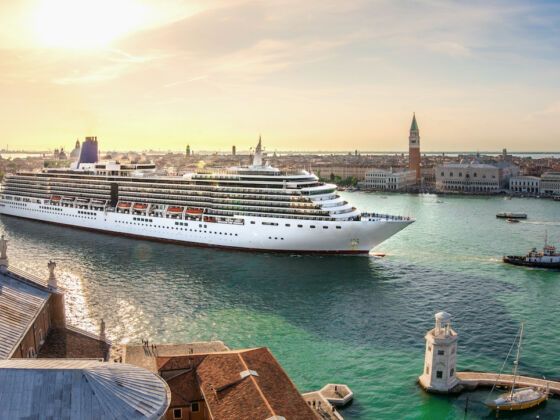Last week, a 92-ton, 16-story-tall cruise ship sailed into the Venetian Lagoon, passed St. Mark’s Square, and docked by Venice’s historic city center. As it navigated the narrow Giudecca Canal, the megaboat was both cheered with welcome signs and derided by protesters.
To many, the return of cruise ships in Venice has been either a disappointment or a shock. After all, just two months ago Italy’s premier decreed that cruise ships should be kept away from the city’s historic center.
